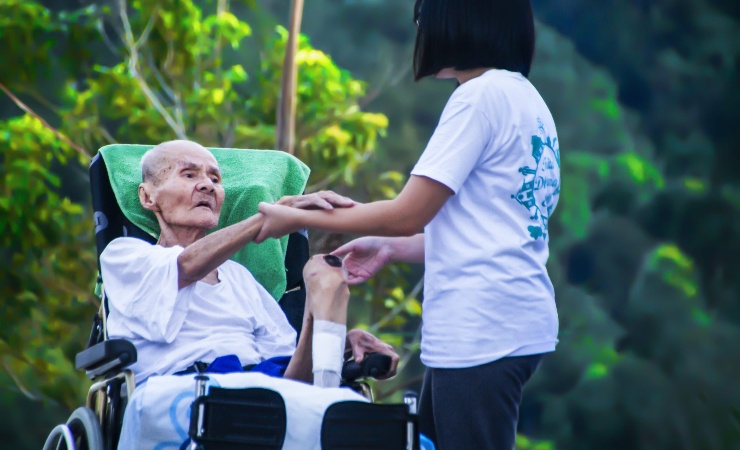Innovating Service Design Meant Adding Value at the End of Life

Today we take a look at the unexpected origins of a methodology described recently in the Journal of Service Research. In “The Trajectory Touchpoint Technique: A Deep Dive Methodology for Service Innovation,” authors Lynn Sudbury-Riley, Philippa Hunter-Jones, Ahmed Al-Abdin, Daniel Lewin, all with the University of Liverpool Management School, and Mohabir Vic Naraine of New York’s Maimonides Medical Center, outline the utility and value of their technique in the real world, while after that paper’s abstract below, they discuss the unusual request that spurred their research and their technique’s inherent innovation.
This article introduces the trajectory touchpoint technique (TTT), a service design methodology that harnesses customer experiences for enriched understanding of value throughout multilevel service components to ultimately increase innovativeness. The authors detail the design and development of the TTT using design science research, a goal-oriented methodology that produces robust and practical solutions to organizational problems. The authors demonstrate the TTT’s practical utility through collaborations with different organizations (n = 9) and diverse service users (n = 240). The authors show how the TTT is an easy to use methodology that enhances understanding of value creation and illustrate its benefits with concrete examples of innovations to service encounters, the service system, and the value constellation. The Authors reveal how a service design methodology can be the bridge between the theoretical standpoint of S-D logic’s perspective on value cocreation and the practical tools and techniques required to operationalize it. Below are some questions and answers with the authors.
Q: What motivated you to pursue this research?
A: As a team of service researchers specializing in consumer experiences, we were pretty blown away when a hospice, supporting the needs of palliative and end-of-life care patients and families, approached us with a novel problem. The hospice told us that they had an abundance of qualitative and quantitative feedback that stated the service provided was fantastic in every way. So, ‘Tell us how to improve an already fantastic service’ was a novel challenge! The hospice also challenged us to design a better way of collecting consumer lived experiences. The Trajectory Touchpoint Technique (TTT) took four years to design and appraise, with eight further collaborations involved in the validation process.
Q: What has been the most challenging aspect of conducting your research? Were there any surprising findings?
A: Dealing with seriously ill people, some of whom were at end-of-life, was incredibly challenging. Not just the ethical considerations – which were numerous – but more importantly the ways in which we could interact gently with people during a most stressful time of their life. We also knew that the research was very meaningful, and we felt a strong obligation to ensure it led to impactful changes that could really make a difference to future service users. We owed this to the people who generously gave up their valuable time to engage with us. The emotional aspects to collecting the research was at times challenging to us as a team of researchers, too.
The success of the TTT in uncovering myriad ways in which was indeed a ‘fantastic’ service could be improved did surprise us. The use of cartoon images, too – we knew rich pictures could elicit deep feelings and emotions, but to use cartoons in such a situation, with such a positive response, came as a pleasant surprise to us.
Q: In what ways is your research innovative, and how do you think it will impact the field?
A: There are so many innovative parts to the TTT. Design Science Research (DSR) is still relatively novel in service design, and in our opinion needs to be more widely used to ensure more research has practical applicability. The TTT enables organizations to uncover previously missed opportunities for value cocreation, and it provides a practical and innovative way of implementing principles of S-D Logic. The simplicity of using the TTT, coupled with its validly in terms of its solid and complex theoretical foundations, also makes it innovative and shows that techniques don’t have to be difficult to use in order to uncover complex, deep, and rich data. Finally, while we tested the TTT in a variety of different services, the fact that our primary case study was in palliative care gives the research another innovative dimension. We know of no previous service research to examine such a service.
We feel the TTT will have a major impact in the field: already variations of the TTT are being used in several hospital services, in advance care planning, and in the shaping and reconfiguration of mental health services. We encourage service researchers far and wide to try it and we hope they will be as blown away by the results as we have been.






























































































